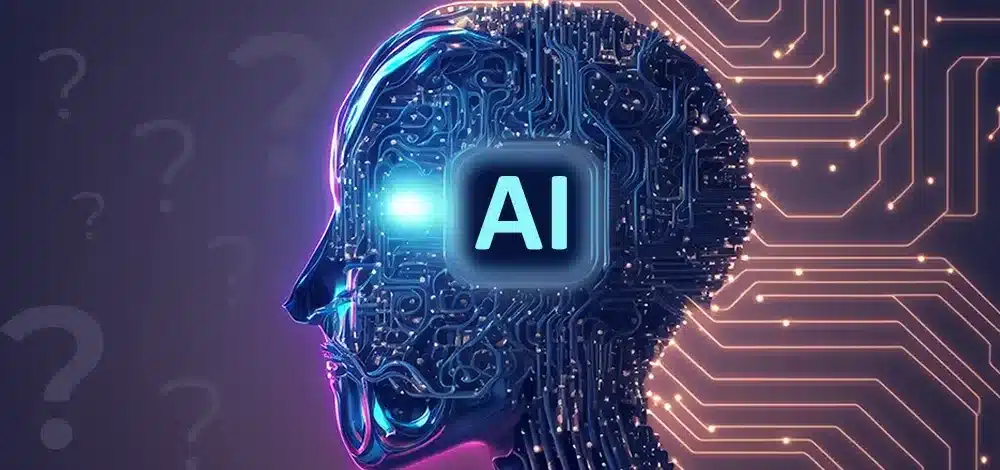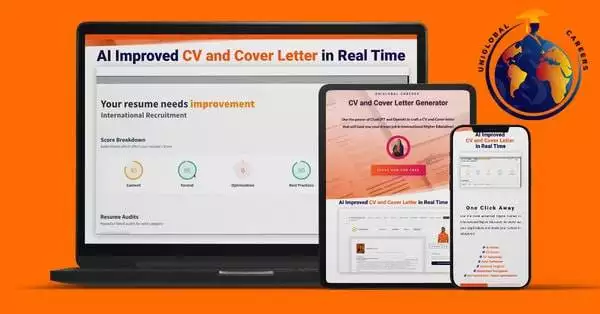Student exchange programs are an excellent opportunity for students to experience different cultures, languages, and education systems worldwide. However, managing such programs can be a daunting task, and one of the most pressing challenges is selecting the right students for exchange. In recent years, many educational institutions are turning to AI-powered technologies to streamline and improve the student exchange process. In this article, we discuss the role of AI in student exchange programs and explore how it can enhance the exchange experience for students, teachers, and administrators.
AI-Enabled Application Process
Traditionally, student exchange programs involve a lengthy and cumbersome application process that requires students to submit multiple documents and meet various requirements. However, with AI, the application process can be streamlined and made more efficient. AI-powered chatbots can help students navigate the application process, answer their questions, and provide personalized guidance. In addition, AI algorithms can analyze student data and match them with suitable exchange programs based on their interests, academic performance, and other criteria.
Enhanced Selection Process
AI can also improve the selection process for student exchange programs. By analyzing student data, such as academic performance, extracurricular activities, and language proficiency, AI algorithms can identify the most suitable candidates for exchange programs. This can help ensure that students are matched with programs that align with their interests and goals, and that they have the necessary skills and qualifications to succeed in the program.
Improved Exchange Experience
AI can also enhance the overall exchange experience for students. For example, AI-powered chatbots can provide students with real-time language translation, making it easier for them to communicate with their host families and fellow students. AI algorithms can also analyze student data and provide personalized recommendations for cultural activities and events based on their interests. This can help students make the most of their exchange experience and gain a deeper understanding of the host culture.
Conclusion
AI is transforming how we manage and deliver education, including student exchange programs. By streamlining the application process, improving the selection process, and enhancing the exchange experience, AI is making it easier for students to participate in exchange programs and gain valuable international experience. As AI continues to evolve and improve, we can expect even more innovative applications in education and beyond.
Enhancing the Student Exchange Application Process
The student exchange program is an exciting opportunity for students to experience different cultures, learn new languages, and gain a global perspective. However, the application process can be time-consuming and complex, both for students and administrators. Fortunately, advancements in artificial intelligence (AI) can streamline the application and selection process, making it more efficient and effective.

Streamlining Application and Selection
One of the biggest challenges in the student exchange program is managing the large volume of applications and selecting the most suitable candidates. AI can automate this process by using algorithms to analyze and sort through applications based on specific criteria such as language proficiency, academic achievements, and cultural background. This reduces the workload for administrators and ensures that the selection process is fair and transparent.
Moreover, AI can also help in identifying potential candidates who may have been overlooked in the traditional application process. By analyzing data from various sources, such as social media profiles and academic records, AI can identify students who have the potential to excel in the exchange program, but may not have applied due to lack of information or awareness.
Personalized Recommendations for Exchange Programs
Another benefit of AI in the student exchange program is providing personalized recommendations for exchange programs based on students’ interests, academic performance, and language proficiency. AI algorithms can analyze student data to identify the best exchange programs that meet their unique needs and goals. This ensures that students are matched with exchange programs that align with their interests and aspirations, increasing the chances of a successful and fulfilling exchange experience.
Moreover, AI can also provide students with information about the host country, including its culture, history, and customs. This can help students prepare for their exchange program and make the most of their experience abroad.
Efficient Document Management and Verification
Managing and verifying large volumes of applications and documents can be a daunting task for administrators. AI can help in this regard by enabling efficient document management and verification. It can automate routine tasks such as cross-checking documents, verifying information, and processing transcripts. This reduces the workload for administrators and ensures that documentation is accurate and up-to-date.
Furthermore, AI can also help in detecting fraudulent documents, ensuring the authenticity of the application and preventing any potential issues during the exchange program.
In conclusion, AI has the potential to revolutionize the student exchange program by streamlining the application and selection process, providing personalized recommendations, and enabling efficient document management and verification. This can help in creating a more efficient, effective, and fulfilling exchange experience for students and administrators alike.
Improving Language Learning and Cultural Adaptation
Learning a new language and adapting to a new culture can be a challenging experience for many people. Fortunately, advancements in technology have made it easier for individuals to learn new languages and adapt to new cultures. In this article, we will explore some of the ways in which technology is being used to improve language learning and cultural adaptation.

AI-powered Language Learning Tools
Artificial Intelligence (AI) has revolutionized the way we learn languages. AI-powered language learning tools can optimize the learning process by providing personalized feedback and adapting to learners’ performance. These tools use machine learning algorithms to understand and respond to students’ queries, making language learning more efficient and effective.
For example, chatbots can be used to practice conversational skills in a foreign language. These chatbots can simulate real-life conversations and provide instant feedback to help learners improve their language skills. Language learning apps, on the other hand, can provide a more comprehensive learning experience by including features such as grammar lessons, vocabulary quizzes, and pronunciation exercises.
Virtual Reality and Cultural Immersion
Virtual Reality (VR) and Augmented Reality (AR) technologies are being used to enhance cultural immersion and facilitate cross-cultural experiences for exchange students. VR technologies provide students with virtual tours of foreign cities, allowing them to explore and experience different cultures in a more immersive way.
For example, a student studying in Japan can use VR technology to explore the streets of Tokyo and experience the local culture firsthand. This can contribute significantly to a student’s cultural immersion experience, enabling them to understand the local customs and traditions better.

AI-driven Cultural Adaptation Support
Adjusting to a new culture can be overwhelming, especially for exchange students who are far away from home. AI-powered tools can provide support for students to understand the local culture, customs, weather, and transportation systems. This can help students adapt to their new environment more quickly and easily.
For example, an AI tool can provide students with information about the local weather conditions, helping them prepare for the climate in their new location. AI tools can also provide information on local customs and traditions, such as how to greet people or what to wear to certain events.
In conclusion, technology has made significant advancements in language learning and cultural adaptation. AI-powered language learning tools, VR and AR technologies, and AI-driven cultural adaptation support are just a few examples of how technology is being used to enhance the learning experience for individuals studying abroad. These tools can help individuals learn new languages and adapt to new cultures more easily and effectively.
Facilitating Better Communication and Collaboration
Communication and collaboration are essential for exchange students to succeed in their academic pursuits, especially when they are studying in a foreign country. Fortunately, with the advent of AI-powered communication and collaboration tools, exchange students can now communicate and collaborate with ease, regardless of their language proficiency levels.
AI-enhanced Communication Platforms
AI-powered communication platforms are designed to facilitate communication among exchange students, teachers, and administrators. These platforms use natural language processing algorithms to translate messages in different languages, ensuring smooth communication among exchange students, teachers, and administrators. With these platforms, exchange students can communicate with their host institution, teachers, and peers without worrying about language barriers.
Moreover, AI-powered communication platforms can also provide exchange students with access to various resources, such as academic materials, course schedules, and campus news. This can help exchange students stay informed and up-to-date on their academic progress and campus activities.
Real-time Translation Tools
Real-time translation tools are AI-powered tools that can translate speech, text, and documents into different languages in real-time. These tools can facilitate communication among exchange students with different language proficiency levels, ensuring that everyone understands the conversation, regardless of their language ability.
Real-time translation tools can also be used in academic settings, such as during lectures and group discussions. With these tools, exchange students can follow the lecture or participate in the discussion without worrying about language barriers.
Collaborative Learning Environments
Collaborative learning environments are essential for exchange students to develop their collaborative skills and work effectively with their peers. AI-powered collaborative environments such as collaborative workspaces, discussion forums, and virtual classrooms can facilitate student collaboration across borders, enabling them to work together on projects in real-time.
These collaborative environments can provide exchange students with access to various resources, such as project management tools, document sharing platforms, and virtual whiteboards. This can help exchange students collaborate effectively and efficiently, regardless of their geographic location.
In conclusion, AI-powered communication and collaboration tools are essential for exchange students to succeed in their academic pursuits. These tools can facilitate communication and collaboration among exchange students, teachers, and administrators, regardless of their language proficiency levels. With these tools, exchange students can communicate effectively, collaborate efficiently, and succeed academically.
Conclusion
AI-powered technologies have the potential to transform student exchange programs by improving the application, selection, and overall exchange experience. AI can also enhance language learning, cultural adaptation, and communication and collaboration among exchange students, teachers, and administrators. As technology advances, it’s essential to continue exploring the diverse applications of AI in education and how it can benefit students worldwide.


